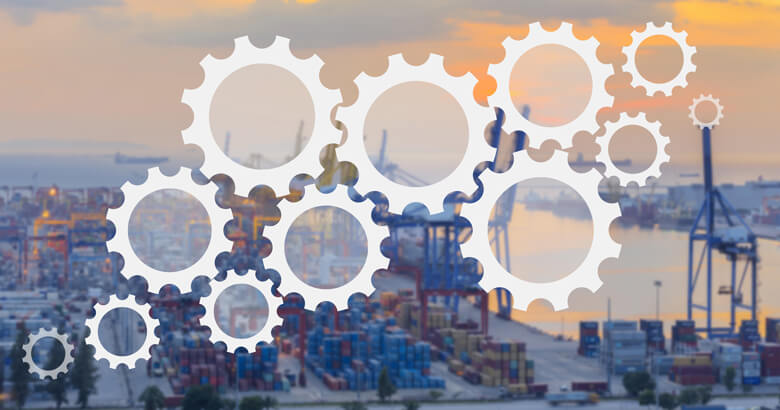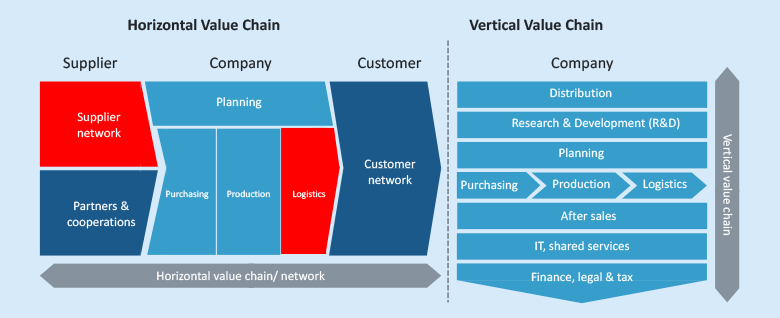Why Your Supply Chain Needs Real-Time Data

Progressive digitalisation has meant that we require – and expect – far more of our supply chains these days than in the past. Now, we generally expect that the right goods will always be in the right place at the right time. This, however, requires the entire value creation process to be reliable, transparent and efficient. An essential component of meeting these heightened needs is real-time data. An end-to-end digitalised supply chain is the key to opening up an effective and efficient flow of goods, money and information across networks.
Real-time data in the supply chain: moving from a horizontal value creation chain to an intelligent supply chain network

If you want to network and harmonise processes across the board, one of the things you need is a supply of relevant data. Information on production status, quality, delivery status, sales quantity, price and much more is already largely available in real time. Ideally, this would be within a largely self-organising network in which units constantly communicate with each other and react flexibly to each other. This lets any area related to procurement, internal logistics, sales or spare parts management benefit from significant increases in efficiency. Furthermore, moving from a horizontal value chain to an intelligent supply chain network lets you fully integrate suppliers, production partners and customers.

Real time data in the supply chain: processes are regulated with cyber-physical systems
In production halls in this fourth industrial age, real-time data accumulates in large quantities and is collected with the help of cyber-physical systems. These systems also, for example, let you carry out simulations based on real-time data. This means you can see the effect of changing suppliers or altering certain steps in the process on the entire supply chain network. By networking production, logistics, engineering and other services, you can synchronise the material and data flow and feed the real time data you gain into your business processes.
This enables you to fulfil the customer’s wishes, even down to producing a fully-customised single item. Cyber-physical systems in highly automated operations react to changing material requirements and redirect the supply chain as required. These automatically calculate the impact of a change in demand on the entire supply chain network and adjust accordingly, right through to production upstream. Intelligent containers and sensors detect stocks and material requirements in real time and automatically initiate and run the ordering process if required. Continuously updated demand data coupled with prompt material flow management means you can reduce the components you carry – and maybe even eliminate your warehousing. Networking your equipment, machines, containers, load carriers and transportation lets you optimally coordinate the steps in the production process and transport needs between companies.
Real-time data in the supply chain improves your logistics
It’s not only those involved in manufacturing who benefit from this. While they can reduce unnecessary set-up time and downtime, the logistics sector also benefits from a digitalised supply chain and the provision of real-time data. By tracking shipments in real time, a company can react to delivery delays early on. Equally, using an intelligently controlled traffic management system can help avoid traffic jams, optimise routes and save fuel.
Optimising logistics processes in this way requires professional integration solutions. A software solution for supply chain management needs to be able to communicate and exchange data with the software of other manufacturers. For many companies, API integration is the key to modern supply chain communication. In order to fully benefit from the advantages of API integration, why not look at our article 3 reasons why you should use a HIP to connect to logistics platforms? Essentially, a hybrid integration platform (HIP) lets you use cloud services along the supply chain more efficiently. A HIP improves
- your business processes
- your customer service
- your technology strategy and how you implement this.
If you are already using the SEEBURGER Business Integration Suite (BIS) in your organisation, it’s worth looking at our comprehensive range of connectors. On-Premises, running from a Public Cloud or an iPaaS, SEEBURGER‘s connectors for warehousing, transport and logistics let you easily connect and manage the services, systems, applications and processes in your supply chain and ensure a smooth, secure data flow within your entire ecosystem.
Real-time data in the supply chain saves time and money
Both the B2B and B2C sectors benefit greatly from digitalising a supply chain. In order to be able to exchange the data you need in real time, you need it to be completely integrated and a simple way to connect everybody involved. However, those who adapt their logistics to the high demands of the market as quickly as possible gain an advantage over the competition. Such a head start is invaluable for a company, especially in these times of increasing globalisation and ever tougher competition from online transactions (e-commerce).
Digitally transforming your supply chain not only lets you accelerate many of the processes in a classic logistics chain, it also significantly reduces personnel costs. Significant cost savings are also achieved through automated systems, automatic identification of goods and the resulting simpler, potentially decentralised warehousing. At its core is a powerful and flexible supply chain management software, coupled with an integration platform, such as the middleware Business Integration Suite (BIS) from SEEBURGER.
[1] Based on: https://www.ginkgo.com/wp-content/uploads/2020/07/SCM2040_final.pdf, P13.
Thank you for your message
We appreciate your interest in SEEBURGER
Get in contact with us:
Please enter details about your project in the message section so we can direct your inquiry to the right consultant.
Written by: Rolf Holicki
Rolf Holicki, Director BU E-Invoicing, SAP&Web Process, is responsible for the SAP/WEB applications and digitization expert. He has more than 25 years of experience in e-invoicing, SAP, Workflow and business process automation. Rolf Holicki has been with SEEBURGER since 2005.





